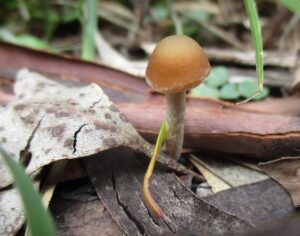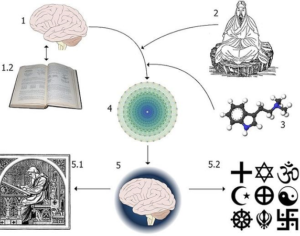Of molecules and minds: the science of ayahuasca
We’ve talked about serotonin receptors like they’re all mostly the same and broadly, that’s true (they’re all looking for serotonin, after all). But that doesn’t make them identical, and scientists have found enough differences to classify serotonin receptors into seven types, which are then broken down into 17 subtypes with a wide variety of functions. Most are pretty uninteresting to psychedelic scientists, but there are two that seem particularly important: serotonin-2A (5-HT2A), and serotonin-2C (5HT2C).
Despite knowing that the serotonin-2A receptor is very important for the biology of psychedelics, scientists are still figuring out what its normal function in the brain is. We know it’s involved in regulating mood, appetite, sexual behavior, learning and memory, as well as some physical responses such as blood vessel constriction and temperature control. It is mostly found in a particular part of the cerebral cortex (known as Layer 5), where it appears on neurons that help communicate information from one brain region to another. Some researchers have speculated this is how psychedelics create their mind-bending effects: By altering how different brain regions talk to each other, the brain becomes chaotic and somehow, this creates the experience of a higher state of consciousness. There is a lot of evidence that the serotonin-2C receptor plays a role in regulating mood and anxiety: Many of the common pharmaceutical treatments for depression and OCD affect activity at the 2C receptor, and we know that it helps regulate the release of dopamine (another key neurotransmitter) in brain regions important for learning and addiction. It has been suggested that the non-addictive nature, and anti-addictive power of drugs like LSD and psilocybin come from their activity at the 2C receptor, which alters function in addiction circuits.
Original Article (Psymposia):
Of molecules and minds: the science of ayahuasca
Artwork Fair Use: Public Domain


























































































































